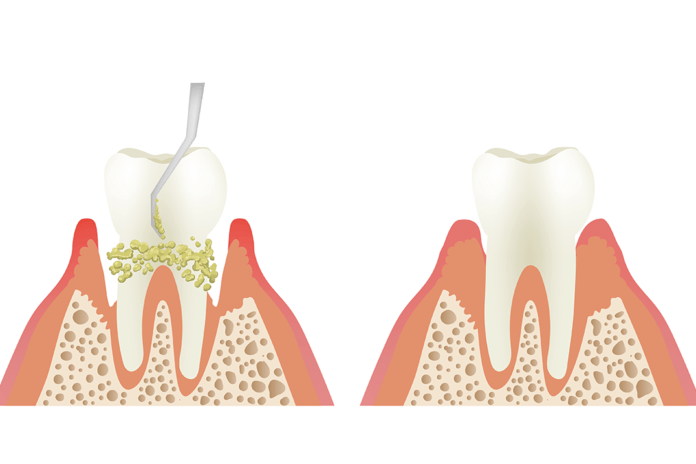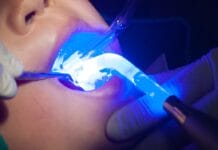Note: This is Part 3 of Debbi Viger’s series, Special Needs: Everyone Has Special Needs. Read Part 1 here and Part 2 here.
Why do some patients have such a difficult time wrapping their head around the difference between a traditional, preventive “cleaning” and treatment for disease? Every hygienist goes through this at some point, trying desperately to explain prophylaxis vs. scaling and root planing. Sometimes it seems like the patient just doesn’t want to get it and has plans to live in their own little bubble of denial. Unfortunately for the dental health professional, this puts us in a difficult position. Options become:
- Performing the traditional, preventive prophy knowing we are not really accomplishing anything truly impactful or health improving.
- Performing some limited scaling and root planing as we do the prophy in attempt to obtain some healing and disease abatement.
- Refusing to do treatment at all.
- Sitting the patient up and educating until true comprehension and acceptance has been achieved.
What’s your choice? It seems as though we all educate at each appointment, but what do we do when the patient still doesn’t understand or doesn’t see the need for treatment? I believe it is our explanation that is not working for the patient. We need to be crystal clear explaining exactly what the disease is and stop minimizing. In very specific language, we need to explain the exact condition in the patient’s mouth.
Use the radiographs to demonstrate healthy bone levels and diseased bone. Use the probe readings to demonstrate healthy numbers compared to the patients’ readings. Use the presence of bleeding to demonstrate active disease. Use amazing visual aids, use your excellent verbal skills, use everything you have to demonstrate to the patient the exact condition of their specific oral health state. Show the plaque and calculus in their mouth using a hand mirror or intraoral camera. Explain the potential for systemic disease exacerbation due to the disease progression in the oral cavity.
It is time we educate and perform our duties as if we are truly part of the medical community. How would the physician explain diabetes, high blood pressure, or thyroid conditions? The patients would be told in a straightforward manner what the disease is, what the treatment options are, and what the patient would be required to do.
The situation is maddening for clinicians and patients alike. Patients want to believe everything is great; they pop in twice per year for an hour, floss at their convenience, and everything will be perfect. Clinicians want to believe that all patients passionately care about their oral health and want overall systemic health.
Sometimes the simplest, most effective way of transmitting the knowledge is putting a mirror in patients’ hands and showing the red, round hemorrhaging tissues. Even more graphic is the intraoral camera. With a few good shots popped up on a screen, the patient can see their oral condition, and it can be highly motivating. Some appointments, we may not accomplish as much treatment as we want, but taking that time to truly engage the patient in the education process brings us closer to the acceptance of treatment and the patient toward ownership of their oral condition.
Once we arrive at patient acceptance, thoroughly explain the actual treatment procedure in its entirety. We need to create value for the prescribed treatment, as well as an expectation of urgency. A written letter describing the treatment gives the patient additional resources to fall back on. Each office can create a simple narrative explaining the diagnosis, the treatment, the time expected in the chair, the number of appointments, and the post-operative care. It can even include specific home care instructions as needed. This form looks great on office letterhead, and if stored on a convenient computer, can easily be personalized to the patient.
Allow time for questions as needed and continue to be their cheerleader as they manage their way through periodontal care. Whenever possible schedule the appointments at the patients’ earliest convenience allowing less time for them to panic or cancel. Schedule all necessary follow up and the next recare to continue the urgency of disease abatement in the patients’ mind. At each appointment, identify areas of improvement and offer praise and encouragement. It’s important to point out positive change to create an opportunity to motivate and offer further instruction, as well as show areas where more change is needed. This guidance validates the need for treatment and offers value for the time and expense the patient is experiencing.
Remind the patient the goal is only needing scaling and root planing one time in their life, and with definitive treatment, and their subsequent excellent home care, this should halt and maintain their periodontal disease. Be firm, be strong, but most of all, educate to the very best of your ability to have 100% case acceptance.
SEE ALSO: Tips for When Patients Refuse Radiographs
DON’T MISS: Ask Kara RDH: Full Mouth Debridement before Prophy











